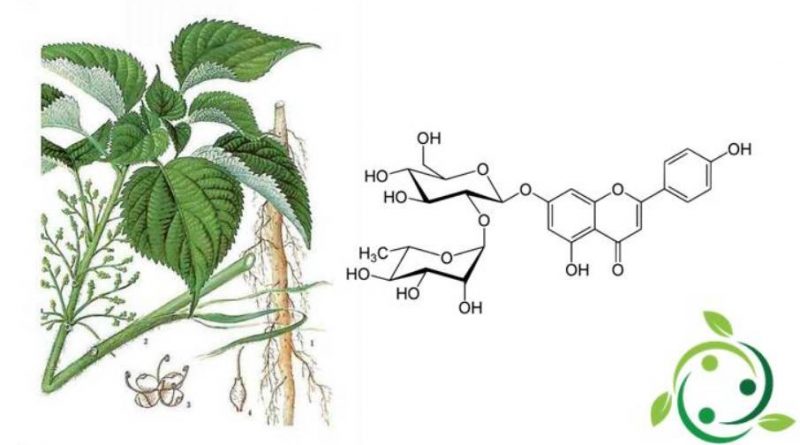Rhoifolin
Rhoifolin
Rhoifolin, the term of which in the official IUPAC nomenclature is: 7- [4,5-dihydroxy-6- (hydroxymethyl) -3- (3,4,5-trihydroxy-6- methyloxane -2-yl) oxyoxan-2- the] oxy-5-hydroxy-2- (4 hydroxyphenyl) cromen-4-one is a glycoside flavone with brute or molecular formula: C27H30O14.
Rhoifolin aglycone is apigenin which is the sugar part (glycone) made up of the neoheperperose disaccharide.
Rhoifolin is a molecule somewhat present in nature in plants.
Among the various plants it is present in the ramie (Boehmeria nivea (L.) Gaudich.) From which it was isolated for the first time. The term “Roi” derives from the generic name of the plant Rhus.
Among other plant species it is present in the leaves of the lemon (Citrus limon (L.) Osbeck), in the leaves of the lemongrass (Citrus × limonia Pehr Osbeck), in the bitter orange (Citrus × aurantium L.), in the leaves of the grapefruit ( Citrus paradisi Macfad., 1830) in the Arrestabue shoots (scientific name Ononis spinosa L.) and in the Serenoa plant (Serenoa repens (W. Bartram) Small, 1926).
Rhoifolin has a variety of significant biological activities including antioxidant, anti-inflammatory, antimicrobial, hepatoprotective and anticancer effects; moreover it can be useful for diabetic complications through the enhancement of adiponectin secretion, the phosphorylation of tyrosine with the translocation of insulin receptor β and GLUT4.
Warning: The information shown is not medical advice and may not be accurate. The contents are for illustrative purposes only and do not replace medical advice.

